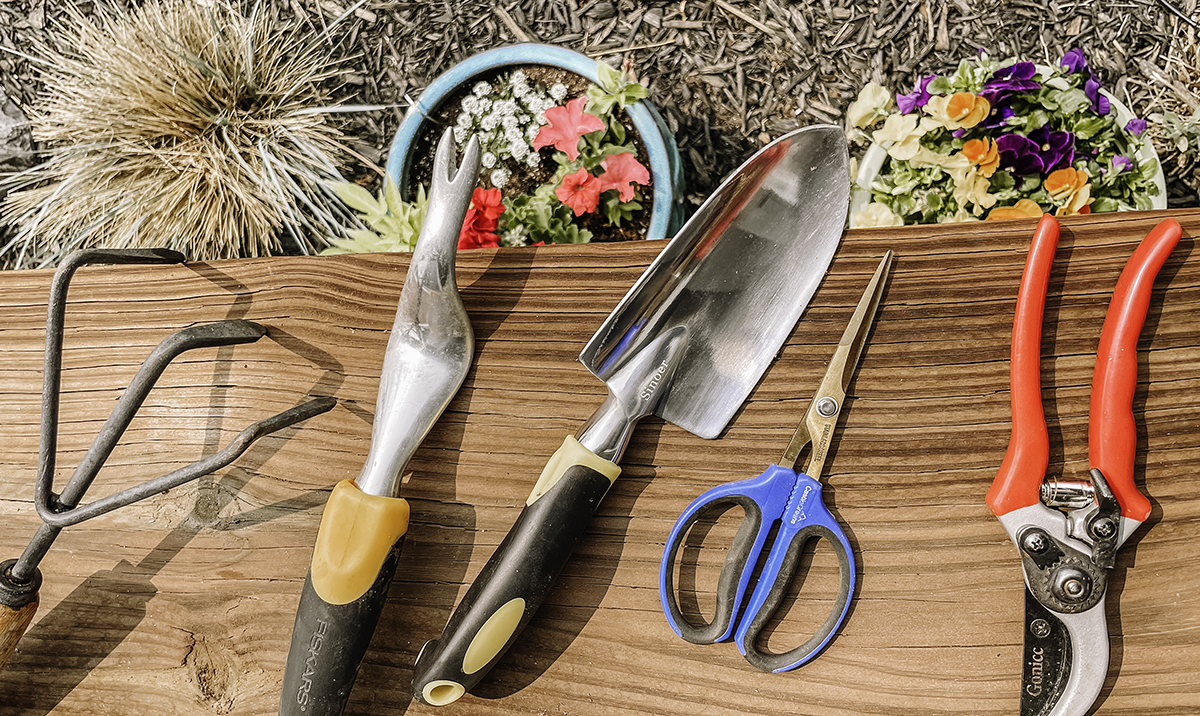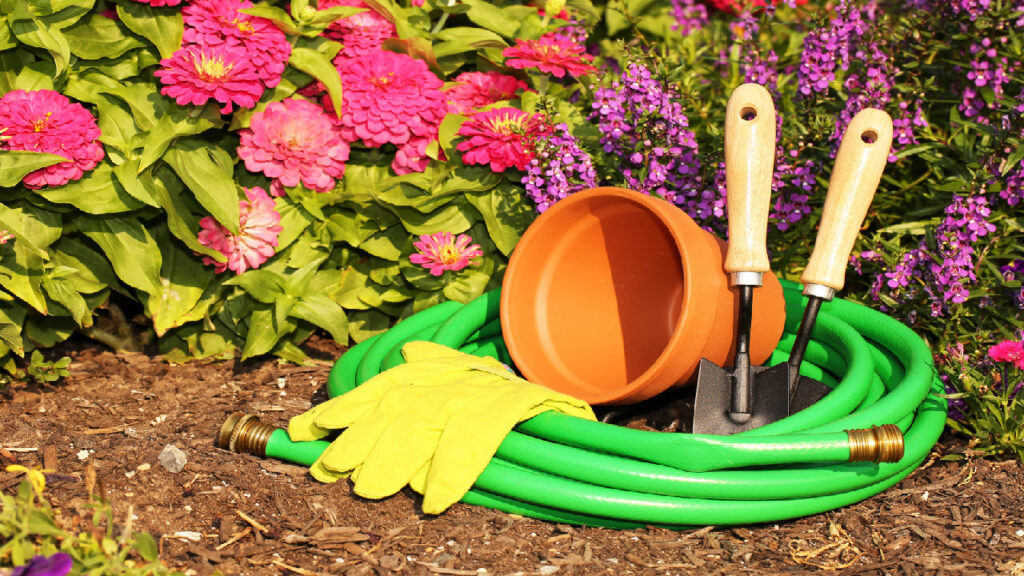blog
Top Gardening Tools for Raised Bed Gardens
Raised bed gardening has become increasingly popular among both amateur and experienced gardeners. The benefits of raised bed gardens are numerous, including improved soil drainage, better control over soil quality, and easier access to plants. However, to truly make the most of a raised bed garden, having the right tools is essential. From soil preparation to maintenance, the proper gardening tools can enhance productivity, reduce physical strain, and ensure your plants thrive in their elevated environment.
In this article, we’ll discuss the top gardening tools every raised bed gardener should have, focusing on tools that help with soil cultivation, planting, watering, weeding, and overall maintenance. Whether you’re a seasoned gardener or just starting, these tools will make your raised bed gardening experience more enjoyable and efficient.
1. Hand Trowel
A hand trowel is one of the most versatile and essential tools in any gardener’s toolbox. In a raised bed garden, a hand trowel is perfect for digging small holes, transferring soil, planting seeds, and transplanting seedlings. Because raised beds are usually smaller and more accessible than traditional garden plots, the hand trowel’s compact size allows for precision work in tight spaces.
When choosing a hand trowel, look for one with a comfortable grip, a sturdy steel blade, and a durable construction. A rust-resistant material is also important for longevity, as it will withstand frequent use in wet conditions. Whether you are creating planting holes or mixing compost into the soil, a high-quality hand trowel is a must-have for raised bed gardening.

2. Garden Fork
A garden fork, also known as a digging fork or spading fork, is a versatile tool designed to aerate and break up the soil. Raised beds often contain loose, well-draining soil, but sometimes compacted areas can develop, especially after planting or watering. A garden fork helps to loosen the soil, allowing air, water, and nutrients to reach the plant roots more effectively.
The garden fork is an excellent tool for turning over soil, removing weeds, and incorporating organic material like compost into the raised bed. It can also be used for cultivating soil around existing plants to maintain healthy root systems. When working in raised beds, opt for a garden fork with shorter tines and a comfortable handle, as this design is more manageable and allows for better control in smaller spaces.
Garden forks come in various sizes, so choose one that matches the depth and size of your raised bed. For instance, if your raised beds are relatively shallow, a smaller garden fork may be more suitable for your needs. This tool is invaluable for gardeners who want to maintain healthy soil structure in their raised beds while reducing compaction.
3. Weeding Tool
Weeding is a task that every gardener must deal with, and raised bed gardens are no exception. Weeds can grow quickly and rob your plants of vital nutrients, water, and sunlight. The key to managing weeds in a raised bed garden is having the right weeding tools to remove them efficiently without disturbing the soil around your plants.
There are several types of weeding tools, but a hand weeder is particularly useful for raised bed gardening. A hand weeder is a small tool with a long, pointed blade or fork that allows you to target weeds at the root level. Its design ensures that you can easily reach and remove weeds without having to kneel or bend over, which can be particularly helpful for gardeners with mobility challenges.
For larger or more stubborn weeds, a long-handled hoe or a cultivator can be effective. These tools allow you to pull weeds out of the ground or break up soil, disrupting weed growth. Some models even have an adjustable handle, which helps reduce back strain when working in raised beds. Keep in mind that regular weeding is essential to prevent weeds from competing with your vegetables or flowers for nutrients.
In addition to physical tools, there are also organic solutions like mulch and landscape fabric, which help suppress weeds and keep your raised bed garden cleaner. A layer of mulch also helps retain moisture in the soil, reducing the need for frequent watering.
4. Soil Moisture Meter
Maintaining the proper moisture levels in your raised bed is vital for plant health. Because raised beds are above ground, they tend to dry out more quickly than traditional garden plots. Overwatering or underwatering can lead to poor plant growth, root rot, or nutrient deficiencies. To prevent this, using a soil moisture meter is one of the best ways to monitor your garden’s water needs.
A soil moisture meter is an essential tool that allows gardeners to measure the moisture content of the soil at different depths. By using this tool, you can ensure that your raised bed garden gets the right amount of water, preventing both overwatering and underwatering. These meters are simple to use, with a probe that is inserted into the soil to measure the moisture levels.
Most soil moisture meters are equipped with an easy-to-read dial or digital display, which indicates whether the soil is dry, moist, or wet. With this data, you can adjust your watering schedule accordingly, ensuring your plants receive the appropriate care. This tool is especially beneficial for gardeners with raised beds that may dry out faster than ground-level gardens.
Additionally, a moisture meter can help you avoid wasting water, which is especially important in drought-prone areas. By knowing exactly when your raised bed needs watering, you can conserve water while ensuring optimal growing conditions for your plants.
5. Garden Kneeler and Seat
Raised bed gardening offers a range of benefits, including reduced strain on your back and knees. However, there are still times when you may need to kneel down to plant, weed, or harvest. A garden kneeler and seat combination is a versatile tool that provides both comfort and support during these tasks.
The garden kneeler is a padded cushion that helps protect your knees when kneeling on hard surfaces. It also serves as a seat, giving you a comfortable place to sit while working in your raised bed garden. Many garden kneelers come with handles that make it easier to get up and down, reducing the strain on your joints.
A garden kneeler can be especially helpful for those with mobility issues or individuals who have difficulty bending over. With a garden kneeler and seat, you can perform tasks like planting seeds, pruning plants, or harvesting vegetables without the discomfort associated with kneeling on the ground. Many models are foldable and lightweight, making them easy to store and move around the garden as needed.
In addition to providing comfort, garden kneelers can be equipped with storage pockets for tools, gloves, or other small items, making it a convenient all-in-one solution for raised bed gardening.

6. Pruning Shears
Pruning is a crucial part of maintaining a healthy garden, especially when working in raised beds where space is often limited. Proper pruning encourages healthy growth, improves airflow, and prevents overcrowding. Pruning shears, also known as secateurs or hand pruners, are the go-to tool for cutting back stems, branches, and dead growth in raised bed gardens.
When selecting pruning shears, look for a pair that feels comfortable in your hand, as you will be using them frequently. A sharp, high-quality blade is essential for clean cuts, and a bypass style pruner is ideal for cutting through live stems and branches. The bypass pruner has two blades that pass by each other, making it more efficient and less likely to crush the stems compared to an anvil-style pruner.
Pruning shears are perfect for trimming herbs, flowers, and vegetable plants, as well as removing dead or damaged foliage. Regular pruning helps your plants grow more efficiently, as it encourages the production of new growth and eliminates areas that could harbor disease or pests. For larger plants or woody branches, you may need a lopper or pruning saw, but a good pair of pruning shears will suffice for most tasks in a raised bed garden.
7. Garden Hoe
A garden hoe is an essential tool for any raised bed garden, especially when it comes to managing weeds and cultivating soil. While you might think of a hoe as a tool for large, in-ground gardens, there are many compact versions available that are perfect for raised beds. A hoe is ideal for breaking up the soil’s surface, aerating it, and creating furrows for planting.
Raised beds can become compacted over time, especially after heavy watering or the addition of new soil. A hoe allows you to loosen the soil, making it easier for plant roots to grow. It also helps to break up clumps of soil and incorporate compost or fertilizers.
For raised bed gardening, look for a hoe with a long handle that allows you to stand while working. This reduces strain on your back and knees, making gardening more comfortable. Additionally, hoes with adjustable handles can be customized to your height, further improving ergonomics.
A garden hoe is also an excellent tool for weeding, especially when used on the surface of the soil. By hoeing regularly, you can remove weeds before they establish deep roots, keeping your raised bed garden neat and productive.
Conclusion
In conclusion, having the right tools is key to making the most of your raised bed garden. Tools like hand trowels, garden forks, and soil moisture meters will help you maintain healthy soil, manage your plants more effectively, and keep weeds at bay. Whether you’re an experienced gardener or a beginner, the tools mentioned above will make your gardening tasks more manageable and enjoyable. As you continue to grow your raised bed garden, investing in quality tools will help you achieve the best results, ensuring that your plants flourish season after season.


